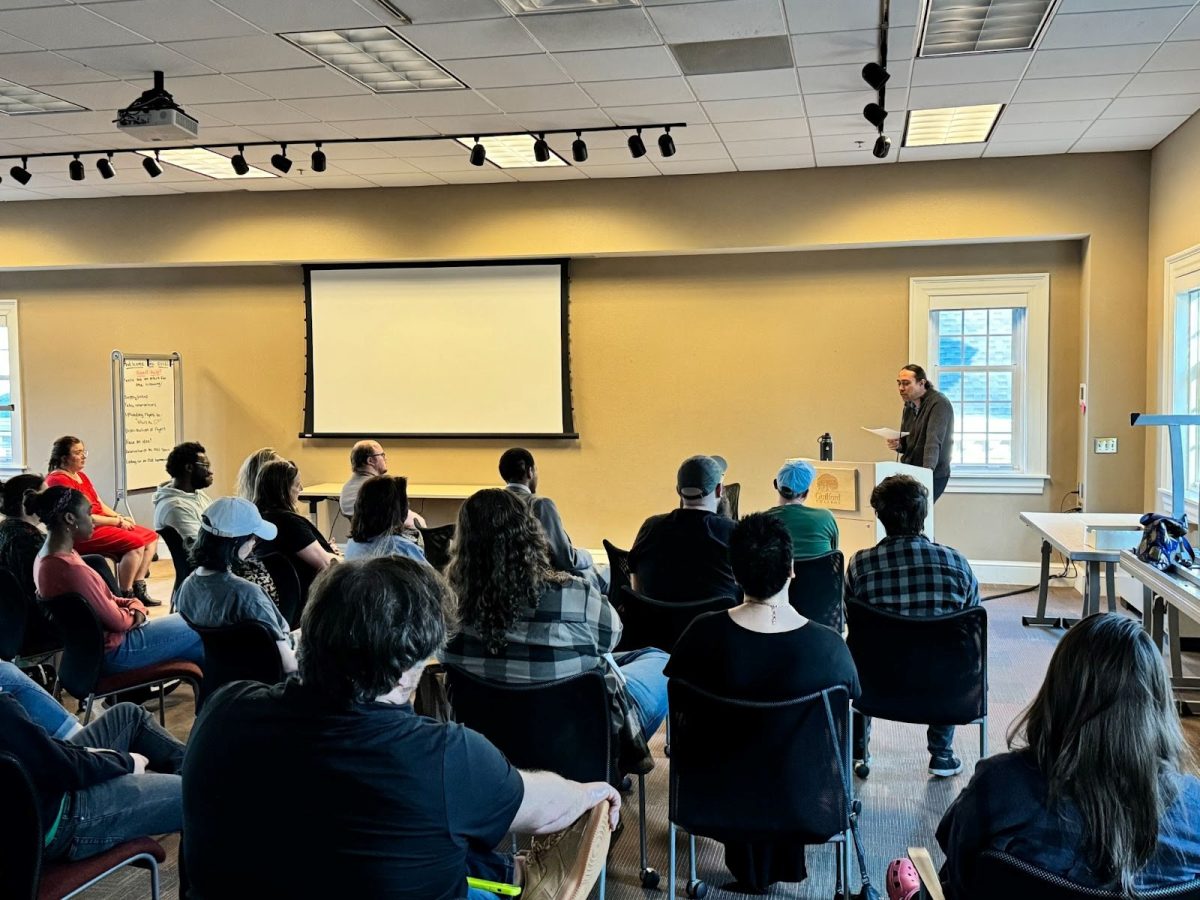With an almost 40 percent decrease in the Center for Continuing Education enrollment over the past three years, a refurbishing of the department may be just what Guilford College needs.
Last semester, the CCE enrolled 200 fewer students than assumed in the worst-case-scenario number agreed on by Guilford faculty. This drop was largely due to cuts in federal and state grants that helped support adult students. State legislative tuition grants, used by many CCE students in the state, were cut, leading to a major increase in tuition for adult students.
“The tuition increased about three percent this year, and over the four years I’ve been here, I know it’s been about a five percent increase,” said CCE junior Theresa Gregory. “So yes, we’ve had a significant increase.”
The low enrollment numbers may also be due, in part, to a few issues specific to Guilford College.
At the beginning of this school year, Guilford lacked a recruiter for CCE students and, according to some students, many professors were not willing to plan courses sympathetic towards CCE students, who oftentimes have families or jobs.
“I work 12-hour swing shifts,” said Gregory. “But the professors could care less. I don’t mean that in a negative way, but when you’re registered as a student here, they expect you to (act) as if you’re a traditional student on campus.
“We don’t have any leniency. I would absolutely like to see that changed.”
According to President Jane Fernandes, students should speak to the appropriate personnel if they are having difficulties.
“The best way is for the students to speak with Martee Holt and the staff,” said Fernandes. “We know that adult students have other responsibilities. (We) work very hard to accommodate their needs, and I think if they know about the issues, they’d be happy to improve.”
In addition, some CCE students feel alienated by the largely younger student population.
“The younger people look at me weird,” said CCE student Phillip Osta, only two weeks into his first semester. “Some of them act like they’ve never been around black people before.”
Currently, the program faces a host of changes, including the departure of Rita Serotkin, former associate vice president and dean for continuing education. Serotkin is now working on various projects with Fernandes and has plans to retire from the staff entirely in March.
“In saying goodbye, I also give thanks to Rita for her many years of service and commitment to Guilford’s adult learners,” said Holt, assistant dean of CCE.
Roger Kieffer is filling in as interim vice president for enrollment to assist with Serotkin’s departure from the CCE and will be working with Holt for this semester. Holt will also be taking primary control of the CCE program this semester and will be guiding the department through any new policies or changes.
“We’re going to be moving to having just an online application and the capability of uploading that, which we don’t have right now,” said Holt, explaining future changes within the CCE program, “We’re moving positions around to be more effective as well. We actually have identified three staff (members) who are going to do recruiting full time, which we have not had in the past.”
Fernandes and the CCE department plan to build a team to assist in the restructuring of the CCE department. Any other alterations within the CCE are still largely under discussion. However, these changes will likely unfold at the end of this semester or next year.
“I think that all of us at Guilford College are hoping to see the CCE program become strengthened and would love to see the enrollment stabilized,” said Fernandes.
Much of the addressed adjustments will not pertain to the problems involving CCE students being accepted by classmates and teachers being willing to adapt and work with their CCE students’ time issues.
How, or if, the school plans to address these issues is yet to be seen.






